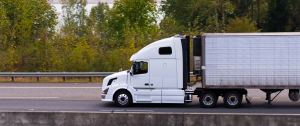
Each year, NFI Industries honors the dedication and excellence of its drivers who achieve remarkable industry milestones in safety and service.
At two recent events held in Chicago and Lehigh Valley, Pennsylvania, NFI recognized 15 drivers who joined the prestigious Million Miles program for reaching one million accident-free miles. Additionally, 13 drivers earned a coveted place on the NFI Haul of Fame wall in Camden, NJ—an honor reserved for those who have driven two million safe miles or marked 20 years of dedicated service with NFI.
NFI also honored Tracy N., of Garysburg, NC, with an in memoriam placement on the prestigious Haul of Fame wall.
NFI Industries, a leading supply chain solutions provider, takes great pride in every one of this year’s recognized drivers.
“These drivers set the standard for excellence at NFI and throughout the industry,” said Bob Knowles, President of Transportation at NFI. “We are proud to have them represent the company, and it’s an honor to celebrate them, in person, for their incredible achievements.”
“Being a driver myself, it’s a huge honor to be able to recognize these drivers,” added Bob Beiner, Regional Vice President of NFI’s midwest branch. “I understand what they go through on a day-to-day basis. I understand the alleys they’re in, the docks they go into, and I just understand the difficulties of driving. It’s a much tougher job than people give it credit for. For those drivers that have achieved one and two million miles safely, I think it just really says a lot for the caliber of person and what they put into their craft every day.”
However, these events are not the only times that NFI makes safe driving a top priority. NFI underscores its commitment to safety year-round through continuous driver training, rigorous onboarding standards, and advanced vehicle maintenance.
By using advanced technologies like GPS tracking and collision avoidance systems, they monitor driving behaviors and ensure fleet safety. NFI also fosters a strong safety culture by encouraging open communication, rewarding safe driving, and maintaining strict compliance with federal and state regulations, including Hours of Service rules.
For these talented drivers, this recognition is both an honor and a testament to their commitment to safety and their profession. However, reaching such milestones is no easy feat, and these drivers offer valuable advice for those starting out or aiming to improve their safety records.
“Understand your responsibilities of being a professional driver, ultimately caring about your job and your fellow workers,” said Million Mile driver David S. of Breinigsville, PA. “Always remember you are never larger than your rig. Always respect the equipment you are in.”
“You must love what you do. It takes a vast amount of patience to drive in traffic and your five senses must always be used to their fullest extent. With the right precautions, you can go a long way in your driving career,” said Haul of Fame inductee Elias O, of Chino, CA. “I have loved my time here at NFI; it has felt like a second home since we all treat each other like family.”
When asked about the legacy they hope to leave behind after retirement, these drivers reflected on the impact they want to make on their community and the future generations of drivers.
“I want people to remember me as a good person, a safe driver, and a person who always looks out for everyone else,” said Million Mile driver Jimmy M, of Hamburg, PA.
Angela J., a Million Mile driver from Carlisle, PA, said she hopes “to get another couple million safe miles and help more females here get recognized.”
Here are the names of these accomplished drivers who work hard to make our roads safer for everyone.
2024 Haul of Fame Inductees:
John J. (Adairsville, GA)
Richard J. (Garysburg, NC)
Bernie S. (South Bend, IN)
Elias O. (Chino, CA)
Howard R. (Wilmington, NC)
Russell H. (Hagerstown, MD)
George K. (Framingham, MA)
Peter L. (Framingham, MA)
Michael N. (Minooka, IL)
Vernon D. (Chambersburg, PA)
Milton F. (Ft Worth, TX)
Loren G. (Cambridge, OH)
Randall R. (Laredo, TX)
(In Memory Of) Tracy N. (Garysburg, NC)
2024 Million Miles Drivers
Dylan D. (Ottawa, IL)
Marion D. (Ottawa, IL)
Vance H. (Mauston, WI)
Jeffrey S. (Minooka, IL)
Jim P. (Mauston, WI)
Wanda K. (Breinigsville, PA)
David S. (Breinigsville, PA)
Jimmy M. (Hamburg, PA)
Daniel D. (Merrimack, NH)
James O. (Williamsburg, VA)
Nelson F. (Williamsburg, VA)
Christopher C. (Zephyrhills, FL)
Angela J. (Carlisle, PA)
Keith M. (Garysburg, NC)
Martin R. (Greer, SC)
Congratulations to these exceptional NFI drivers for their remarkable achievements, and to all the drivers nationwide whose commitment to safety continues to make our roads safer every day!









